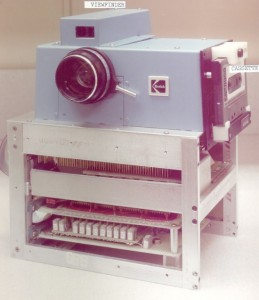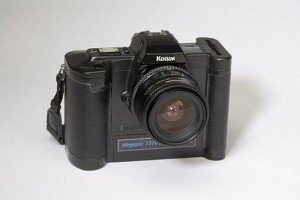Kodak’s Secret Breakthrough
These days it’s almost impossible to imagine a world where digital photography didn’t exist; where pictures took hours and hours to develop, and you had to have them processed by a professional in a dark room, and couldn’t do it yourself on your phone or computer.
But this was reality in 1973, when Kodak was still the only company worth talking about when it came to photography.

But before the digital camera went on to disrupt the industry and change photography forever, Sasson was told to keep it a secret.
At the time, print photography had been in use for over 100 years, and Kodak held a monopoly on the market. The executives at Kodak dismissed Sasson’s new device.
“They were convinced that no one would ever want to look at their pictures on a television set.”
But more than this, higher ups in Kodak didn’t want to disrupt the status quo and give people the ability to view their pictures at home without help. At the time, if you wanted to photograph an event, you almost certainly used a Kodak camera, Kodak film, and had the images processed using Kodak products.
Giving people a device that would allow them to take photograph and view it on their television a few minutes later would cost Kodak millions, they argued.
It took nearly 20 years for Kodak to release their first digital camera, despite filing several patents in that time.
 However, during that time, Kodak allowed Sasson to continue working on digital technology, and in 1989, he and Robert Hills created the first modern digital single-lens reflex (S.L.R.) camera, that looks and functions like today’s professional models. It had a 1.2 megapixel sensor, and used image compression and memory cards.
However, during that time, Kodak allowed Sasson to continue working on digital technology, and in 1989, he and Robert Hills created the first modern digital single-lens reflex (S.L.R.) camera, that looks and functions like today’s professional models. It had a 1.2 megapixel sensor, and used image compression and memory cards.
But even this did not impress Kodak’s marketing department, who argued that film cameras where still what the public wanted and they knew how much revenue film cameras were bringing in for the company.
But Kodak did make money from digital cameras. Because they held the patent, other companies began to pay Kodak to use the technology, and it wasn’t long before the shift to digital happened, but by then, it was too late.
Kodak no longer held the firm monopoly that it did, and with many other companies now offering the technology, Kodak were forced to play catch up from then until they declared bankruptcy in 2012.
Had Kodak listened to Sasson and embraced the new technology, who knows what the landscape of digital photography might look like today.



[…] The first digital camera was invented all the way back in 1975 by Steve Sasson. Sasson was working for Kodak at the time and […]